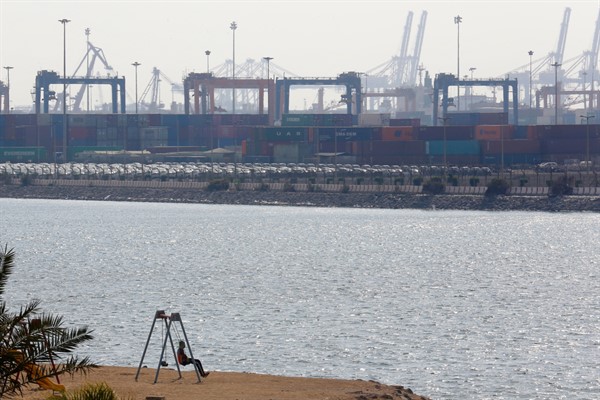On June 30, Saudi Crown Prince Mohammed bin Salman, the country’s de facto ruler, announced a wide-ranging National Transport and Logistics Strategy. Billed as a “key pillar” of Riyadh’s sweeping development blueprint known as Vision 2030, the strategy calls for $147 billion in investments over nine years, including plans for a second national airline and new logistics zones. The operator of Saudi Arabia’s Red Sea Gateway Terminal also plans to spend $1.7 billion to expand its main port in Jeddah and invest in at least three international ports—with each investment totaling some $500 million—over the next five years.
Sustaining such international partnerships will be critical if Riyadh hopes to achieve its ambitious growth targets, particularly in industries like transportation and logistics, as it diversifies its economy away from reliance on fossil fuels. However, these are sectors where other Gulf Arab powers, such as Qatar and the United Arab Emirates, already have a substantial foothold. Thus, Saudi Arabia’s current development path and long-term ambition to become a global logistics hub could strain its relations with neighboring states—a risk that Saudi officials appear willing to take.
The growth of Saudi Arabia’s transportation and logistics industries will be primarily funded by the Public Investment Fund, the country’s sovereign wealth fund. With an estimated $400 billion in domestic and international assets under management, the PIF is an integral financial component of the Vision 2030 plan. “The Public Investment Fund motivates the economy of Saudi more than the budget and this will continue,” Mohammed bin Salman, popularly known as MBS, remarked during an interview in April. In November, MBS announced that the fund would plow $40 billion—more than 5 percent of Saudi GDP—annually into the domestic economy in 2021 and 2022, illustrating its importance as a growth driver.

